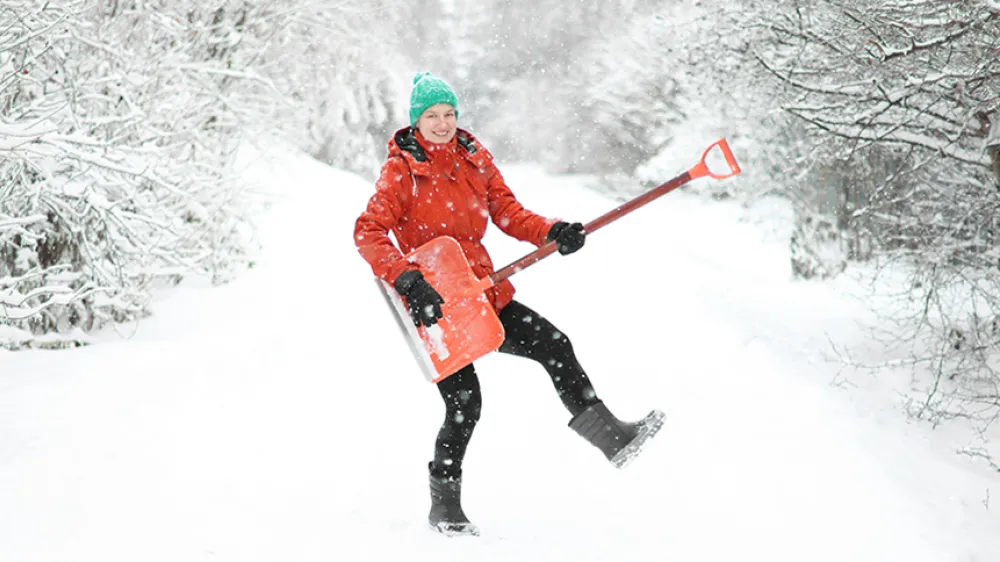Providing your location allows us to show you nearby locations and doctors.
Snow shoveling and your back

01/25/2022
Bad backs, stiff necks, broken bones, heart problems and frostbite are common snow-shoveling health hazards.
Whether you are digging out after a big storm or clearing a pathway for safe passage, there are precautions you can take to prevent becoming a snow-shoveling injury statistic.
Avoid overworking your muscles. Warm up with some light exercises. Then, shovel five to 10 minutes at a time and rest to catch your breath. Stretch your lower back and shoulders during rest periods. A steady, slow pace is best.
Forgo frostbite. Dress in layers to wick perspiration away from your body while keeping you warm.
Related article: Don’t tiptoe around winter footcare
Don’t overdo it. Take a half scoop of wet snow instead of a full shovel load, which can weigh as much as 25 pounds, according to the Canadian Physiotherapy Association.
Replace your dinosaur. The basic snow shovel was invented more than 100 years ago. Look for an ergonomic design with a longer and adjustable handle, curved shaft, good handgrip and lightweight material. These types of shovels lower risk for some injuries.
Don’t throw snow. Plow. Use the shovel to push the snow out of the way. Your “plow” should be powered by your legs. If you have to lift the shovel, bend your knees and keep your back straight. Walk to where you want to place the snow. Don’t throw the snow, which puts stress on your spine.
Fuel up. Before starting to shovel, eat a healthy snack and drink water or a low-sugar sports drink. Keep drinking fluids to stay hydrated while shoveling.
Related article: Nourishing the Heart
Twist and shout. Protect your muscles, ligaments, tendons and other soft tissues by staying square with the shovel and facing the direction in which you are shoveling. You should never twist your body, which leads to strains and sprains.
Dig in. Don’t slip on the ice because your footwear has poor tread. Nonslip shoes or boots with traction are musts.
Know your limits. While deaths due to shoveling are uncommon, heart attacks do happen, especially with adults 55 and older who are not physically active. Get your primary care doctor’s consent before taking on winter’s wrath.
By following these guidelines, snow removal should be safer for you this winter.
Nuvance Health physical therapists are located in the Hudson Valley and Western Connecticut to help you regain strength and mobility, so you can return to independence as soon as possible. Learn more about our physical therapy services or request an appointment here.